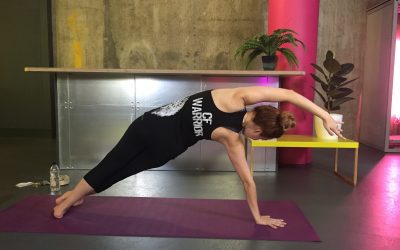When I wrote my last post about music and yoga, it was really the “intangibles” that I was thinking about. Letting go of judgment, freeing from expectations, acceptance of where I am, right now, today. But of course yoga is a physical as well as a mental discipline, and it’s helped me understand my own body even more than I already did. I think singers have a pretty confident assessment of their bodies, but yoga helped me understand the interconnectedness of my own body.
Singers recognize how essential the breath is to the musical phrase. It’s obvious how singers and instrumentalists who play wind and brass instruments depend on the breath – there will be no sound without it. But any thoughtful musician – pianist, violinist, even percussonist – has the ability to make their instrument “breathe” with the rise and fall of a human phrase. Indeed, listening to a skilled string player is one of the best lessons I think singers can get in breath-like phrasing. Yet the simple truth of it is that for singers, the breath is completely inseparable from the music. The only sound we make comes directly from our body. Quite literally, our breath IS our music.
In singing the breath drives our sound; in yoga the breath drives our motion. That is why it is so important that the breath be fluid, unimpeded, and strong. And the best way to ensure that happens to have a strong and stable physical core. allowing for the maximum breath capacity and the dynamic tension that allows for fluid control.
Music-and-yoga life lesson #2:
“Good posture” isn’t forced or rigid – it just means your body is aligned the way it was naturally designed to be. When you align your body correctly, the body operates at maximum efficiency, and the breath is truly free.
With my reduced lung capacity, I always found long phrases particularly challenging. There is a sense that I need to inhale as much air as physically possible in order to make it to the end of a phrase. If you set out to take the biggest breath you can, what do you do? To take a super-deep breath, most people take a lot of air in all at once, then “top it off” – slowing down and letting every last bit of air trickle into the lungs, and then… they hold it.
Herein lies the problem.
If you’re taking in air to sing, you have to time your exhale so that your vocal sound starts on the proper beat. If you’ve been “tanking up” for the upcoming phrase, that means you’ll be holding your breath for some amount of time. Holding your breath causes muscles of your abdomen and throat to engage, restricting the movement of air and keeping the breath from its natural ebb and flow. That pause essentially undoes any good that you may have done with that extra air you took in during your mega-breath, actually making it harder to reach the end of your phrase than it would have been otherwise. So for a long musical phrase, it’s more important to use the breath efficiently, and in its own time, than it is to get more air.

Intellectually I already knew this, but what I didn’t really fully grasp was how helpful proper alignment is to making this happen. Correct posture not only makes breathing easier, it makes singing itself more intuitive. All you need to do is let the skeleton, especially your spine, do the work. Letting everything “hang” from this core part of your body is incredibly freeing. The simple step of sliding the shoulder blades toward each other creates a tension in the back that relaxes the pectorals and simultaneously lifts the sternum. And engaging the pelvic floor so that it’s centered underneath the torso gives a balanced support to the entire abdomen, so I don’t find myself trying to micromanage my diaphragm or abdominals. I find that the entire mechanism works best when I just think about what I want to say – the musical phrase – and I trust that my body knows how to do what I’m asking it to do.






